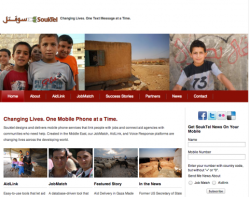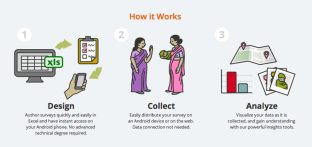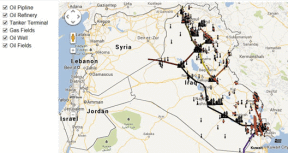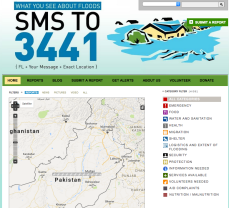It goes without saying that while here I focus on what I have done in these projects, none of them has been done entirely by myself. All of them are the product of amazing teams and organizations which I had the privilege to work with.
Disclaimer: the descriptions of the projects below express only my personal views, and not necessarily the one of the organizations or institutions I have implemented these projects with.

Mapping of AAP Mechanisms in the Refugee Response in Uganda (2020)
As part of a team of two researchers working under the International Rescue Committee (IRC), I worked on the “Review of Accountability to Affected Populations Mechanisms in the Refugee Response in Uganda: Initial Findings for Discussion and further Analysis” to map AAP across Uganda’s protracted refugee crisis and to identify and assess the effectiveness of existing AAP mechanisms in country. The research also presents recommendations to strengthen accountability systems, enhance adaptive management, and support meaningful participation to influence decisions that are made on behalf of clients by aid providers. This report presents high-level concepts related to AAP, then using the theory behind AAP, explores the implementation of AAP in the Ugandan Refugee Response looking at best practices and challenges at all levels of the response. (The public version of the report will be published soon – stay tuned).

Digital AAP (2020)
I conducted this research for the United Nations Refugee agency (UNHCR) as part of the Netherlands MFA supported “Prospects Partnership”, an initiative run by the Dutch Ministry for Foreign Affairs in partnership with the International Finance Corporation (IFC), International Labor Organization (ILO), the UN Children’s Emergency Fund (UNICEF), the World Bank Group and the UN Refugee Agency (UNHCR). I designed and developed case studies on Digital Accountability to Affected People in the eight focus countries: Egypt, Ethiopia, Iraq, Jordan, Kenya, Lebanon, Sudan, and Uganda. As final product, specific recommendations were provided to UNHCR to develop a robust engagement with communities, which will also support the rollout of digital identity systems and strengthen interoperability. The research was used by UNHCR to strengthen its capacity to safely engage with Persons of Concern (PoCs) via social media. (The 8 case studies and the final report are not public)
I developed for Internews the first rumour tracking methodology in 2014 in Liberia, in order to address the deadly Ebola outbreak. Since then, I trained and share the methodology internally and Internews implemented the rumour tracking methodology as a way to address misinformation during humanitarian crises in numerous countries and contexts, reaching hundreds of thousands of beneficiaries. During my last year as a Senior Director for Humanitarian programs I secured financial support from the United States Agency for International Development, and hired a researcher to codify the rumor tracking methodology into a sharable Learning Collection, which includes three parts: Context, Case Studies, and a How To Guide.

The Humanitarian Information Dashboard (2014/2018)
I created and lead in the development, including fundraising, of the “Humanitarian Information Dashboard” (HID), securing funding from Global Giving, Google, the Rubin Foundation and Cisco. The Dashboard is supposed to work like a “Tweet Deck” that monitors, tracks and reports out on information flows across all platforms, allowing aid agencies, governments, local media groups to better inform and communicate with their audience. The HID simplifies and automates the management of information flows from various sources to enable the viewing of information by source (i.e. not only Twitter, but Facebook, YouTube, SMS, voice messages, etc), as well as by topic (i.e. food, water, shelter, security, etc). The HIS is envisaged to be a “smart” system that becomes more sophisticated through user interaction with it. For example, a user could tag and associate words with existing taxonomies or categories (i.e. anything with “bread” should be categorized under “food”), enriching the system’s database of word associations along the line of systems like the Health Map gazetteer.
I managed and oversaw the implementation of the Internews’ Humanitarian Information Service in Haiti, which ran from October 2016 to February 2017. A DFID funded humanitarian project, the project goal was to improve the quality of timely and actionable information exchanges with Haitian communities affected by Hurricane Matthew. Internews’ two-way communication model relied on gathering feedback from affected populations in order to directly address the issues that concern them the most, and to help humanitarian partners integrate their concerns into their programming and interventions. See some of the products of the project here and here.
When I was the Humanitarian Director for Internews in South Sudan, I developed a humanitarian learning collection based on our experience supporting local media for displaced communities and refugees in South Sudan. The Boda Boda Talk Talk Module describes the hyperlocal humanitarian information service that has operated in five United Nations Protection of Civilians Sites (PoCs) across the country. The Radio Distribution Module talks about the need to distribute radios to facilitate information access in South Sudan, and provides background and guidance for distributing radios to displaced populations. The Listening Groups Module explains how humanitarian teams engage with Listening Groups as a tool for two-way conversations with communities. The Humanitarian Radio Module explains how humanitarian radio stations become vital resources for crisis-affected communities and humanitarian responders.

Rumors Tracker – Ebola Response in Liberia (2015-2016)
I created and managed a rumor tracking system in Liberia during the 2015/2015 Ebola crisis in collaboration with UNICEF. The SMS project I designed used a total of more than 25,000 monitors across the country to identify rumors potentially dangerous for the local population safety, and fast tracking them to humanitarian responders and local media to develop information strategies to address them. The project was implemented by Internews under HC3, a USAID funded consortium. See more here: Tracking Rumors to Contain Disease: The Case of DeySay in Liberia’s Ebola Outbreak; Empowering local media can make the difference: 5 lessons from the Ebola crisis; and Combatting Rumors About Ebola: SMS Done Right.

Election Monitoring in Afghanistan (2014)
I worked as a technology advisor for the Internews long-standing partner Nai: Supporting Open Media in Afghanistan to create a new, visual and interactive approach to elections monitoring and coverage in Afghanistan. Using a human centered design approach, I used the already existing information system to lay over a structure of trusted information nodes within the network, that would aggregate election information on a Ushahidi map platform open to the public. See more here: Mapping Election Coverage in Afghanistan
I set up and managed the beneficiaries’ information data collection and analysis of the Internews Gaza Humanitarian Information Service project funded under the rapid response funding mechanism from DFID. The program aimed at providing affected communities in Gaza with reliable, verified and timely information that could support them in making better-informed decisions. To do so, I used an already proved and tested approach that is based on a multi layers approach to information systems that integrate with each other. See more here: For Gaza, Tech and Communication Tools Work Hand-in-Hand and In Gaza, Information Service Makes Connections to Aid and Services Easier: Jossor Ma’Gaza
I worked with the Internews Central Africa Republic project to design release a new version of a crisis map for the Central African Republic (CAR) that displayed, on a daily basis, humanitarian information collected from across the country by local journalists. The map, originally created under my direction in 2012, was one of the very first successful tentative to connect humanitarian organizations with media and with beneficiaries directly, in order to have community needs approach-based response. See more here: Supporting local media in the Central African Republic and Integrating Local Media and ICTs into Humanitarian Response in Central African Republic

Dadaab Humanitarian Information System (2013)
I worked on the set up of the beneficiaries communication part of the Internews Dadaab Humanitarian Information Service (HIS), a project aiming at addressing the information needs of the refugees population through empowering local journalists to report on the issues relevant to their communities, and creates a platform for feedback with humanitarian stakeholders in the camps. The project, throughout a partnership with Souktel, provided the Humanitarian Information Service in Dadaab with key mobile technology components to directly communicate with local communities using mobile phones. See more here: Setting up a mobile two-way communication system in the world largest refugee camp
After testing the use of mobile technology for data collection in a humanitarian setting, I designed and implemented this project to test which humanitarian mobile data gathering kit would best support a research team conducting Humanitarian Information Needs Assessments. More importantly, I tested which hardware and software technology could enable a research team – in the midst of a crisis – to easily train local researchers on the ground to collect, aggregate, share and analyze information within the time span of a week. See more here.
The Internews Covering Energy project trained around 100 journalists and community service organization staff in the fundamentals of the oil industry, and dramatically enhanced their understanding of the complex technical issues surrounding the extraction industry. As part of this project, I trained journalists on using social media and ICTs, including extensive training on cyber-security and privacy, for reporting on Iraq’s Oil infrastructure. See more “”Beat” Reporters Cover the Energy Industry in Iraq” and Iraqi Journalists Closely Examine Oil Industry
In 2012 and 2013 Internews hosted two “innovation labs” in Kabul as part of its USAID-funded “Afghanistan Media Development and Empowerment Project.” The events brought together Afghan experts in the fields of information communication technology (ICT), media, government, civil society and business development with a view to incubating new media and technological innovations that would have lasting socio-economic benefits for Afghanistan. I worked as a technical advisor for the first Innovation Labs in Kabul in 2012, teaching in between other things: cybersecurity; social media strategies; business development for technology projects. See more here, here and Kabul Innovation Labs Report
I help design and implement the Internews Mobile2Radio project “Connecting Local Media, Humanitarian Actors and Communities Through Innovative Communication Flows”. The project, under the United States Institute for Peace Communication for Peace-building priority grant program (CfP) supported innovative practice and research designed to increase understanding of how communication flows and communication technology can best be leveraged to improve the practice of peace-building to create a reliable, predictable and sustainable system that will allow local media to gather, in real time, first-hand information from affected populations and channel it to the humanitarian community using new technologies while establishing a complimentary two-way communication flow with communities affected by conflict and violence. See more here: Communication for Peace-building Project

Using crowdsourcing for transparency and democracy in Ukraine (2012)
I supported Internews Ukraine, a local NGO supported by Internews, to run an election monitoring project throughout the entire country by using a mix of crowdsourcing, professional electoral monitoring, and media monitoring, leveraging the use of new technologies like mobile phones, social media and the internet. The Crowdsourcing platform was created by CityVox, a company that created a proprietary platform that allows for complex data filtering, tagging and processing in the back end, combined with customizable user interfaces. The user interface of the platform is being build by Development Seed. See more here: ElectUA Registered Ukraine-wide Election Frauds Despite DDOS Attacks and here.
I managed and designed in Kenya, through the Internews Center for Innovation and Learning, and in partnership with MobiKash and local radio stations, a project called mDedications . The project piloted a new technology designed to enable community members to call their local radio stations, record a message through an IVR system, and pay for this message using mobile money. The system could also be used to play PSAs to listeners in order to better inform them about civic engagement or election related issues.
I supported remotely this pilot project, in collaboration with the Center for Environment Human Rights and Development, a rural-based and rural-focused non-profit organization working on the Niger Delta region of Nigeria. The project was implemented to support the creation of a human rights monitoring system based on the use of the mesh network technology. See more here: Human Rights via Mesh-Casting.

Using SMS to report and address cases of human trafficking (2012)
I acted as remote support and technical advisor for the Enslavement Prevention Alliance West Africa (EPAWA), a nonprofit organization from Ghana. Financed by Internews, the organization trained monitors to report cases of human trafficking and domestic violence, in real-time, to the EPAWA headquarter in Accra, through two open source software applications: FrontlineSMS and Ushahidi. See more here: Final review of the Kita Hude Yee project.

Information and Communication Technologies driven Citizen Feedback (2011)
I worked as the main strategy lead for this pilot project, conceived in February 2011 as part of a unique government – NGO partnership, the Beijing Transport Research Center (BTRC) collaborated with Friends of Nature (FON), China’s longest standing environmental NGO, and Nairobi-based technology provider Ushahidi with support from the World Bank, to create an online urban transport public feedback portal. The project aimed to utilize the prevalence of cellular phones (and other mobile devices) and a crowdsourcing methodology to change the way urban transport improvements are conceived, planned for, and delivered in Beijing, China. See more here: China: Online Platform Engages the Public in Urban Transport Planning and Improving Beijing’s Urban Transportation with Crowdsourced Mapping

Standby Task Force (2011)
I am the co-founder of the Standby Task Force, a network of volunteers that was formed in 2011 to provide volunteer online digital responses to humanitarian crises, local emergencies, and issues of local or global concern. Since its foundation the SBTF had responded to more than 30 major emergencies across the globe. See more here: Standby Task Force

Cholera Health Map (2011)
I worked on this project in collaboration with Health Map and Humanity Road to respond to the Cholera crisis in Haiti. As a Strategic Advisor I worked to support the integration of volunteers based information and Crisis Mappers project with the existing Health Map methodology and on-going mapping of the outbreak. See more here: Cholera Health Map

U-Shahid Egypt (2010/2011)
I worked as Strategic Consultant and Trainer for the “Development and Institutionalization Support Center” (DISC), an Egyptian group based in Cairo that launched the U-Shahid project—using both crowdsourcing and “blogger-sourcing.” During the project 250 bloggers and activists in five key cities around Egypt monitored the elections and report their observations in real-time on a live map. The outcome of the project was more than 2700 reports of violation verified, that resulted in 150 court cases in Egypt. The project was funded by Freedom House. See more here: Daring to Hope in the Land of Pharaoh: Monitoring the Egyptian Elections Using Ushahidi and Analyzing U-Shahid’s Election Monitoring Reports from Egypt
The Pilot Program for Climate Resilience (PPCR) is designed to pilot and demonstrate ways to integrate climate risk and resilience into developing countries’ core development policies, plans and programs. In Zambia, the PPCR is led by the Government and is expected to be financed through Government budget, Multilateral Development Banks (MDBs), and leverage ongoing activities funded by other Cooperating Partners (including the UN), private sector and civil society. I worked as consultant for the World Bank to integrate citizens feedback and traditional knowledge into the process through the use of ICTs, mapping and mobile technology, that fed into the Participatory Adaptation part of the two programs.
I worked as a remote Volunteers Coordinator for the PakReport platform on the 2010 flood in Pakistan, which claimed over 1600 lives and displaced over 18 million individuals. To overcome humanitarian information gaps, the Pakistan Flood Incident Reporting was launched immediately after the recent floods. PakReport was a data portal designed to gather comprehensive and dynamic information on disaster-related variables. The website identified key information to facilitate better long-term policy analysis and feed those information to UNOCHA and other humanitarian organizations.












